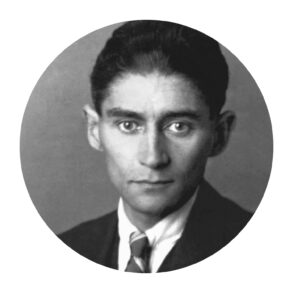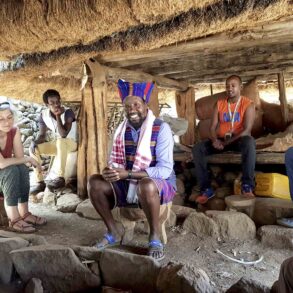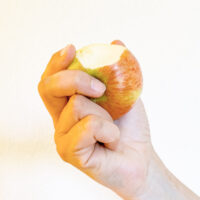Ukraine does not have its own identity but has always been Russian. This narrative of Moscow caught on in the West. Now that the country’s sovereignty is under threat, it is all the more important to become aware of its identity. Current publications help with this.
Under the title ‹L’Occident est bien plus influencé par l’impérialisme russe qu’il ne l’admet› (‹The West is much more influenced by Russian imperialism than it admits›), the French daily newspaper ‹Le Monde› published an interview with Mykola Riabchuk, head of research at the Ukrainian Academy of Sciences, on May 9, 2022. «In the foreign press and in the speeches of leading politicians, it is often heard that Ukraine is divided, which perfectly coincides with the claims of Russian propaganda,» says Riabchuk. «The West is much more influenced by Russian imperialism than it admits.» He adds that the West had no awareness of Ukraine’s existence before it gained its independence in 1991. Thus, ‹Russian mythology›, which is still widespread today, could «pass as scientific truth on an international level». In most textbooks from American and British universities for courses in Eastern European history, «Ukraine is portrayed as a ‹natural› part of Russia,» said Riabchuk, who looked at these textbooks. They were often written by Russian emigrants «and served to train generations of regional experts and journalists.» At the end of the interview, Riabchuk contrasts this view with an outline of Ukraine’s history.
From Polish Influence To Autonomy
Before Ukraine was annexed by Russia, it has been for a long time under Polish control. This was especially true during the Two Nations Republic (1569–1795), which consisted of the Grand Duchy of Lithuania and the Kingdom of Poland. «This experience helped to anchor Ukraine in Europe in terms of political values,» Riabchuk said, as the Polish-Lithuanian state functioned on a much more open basis than Russia, «where perfect despotism prevailed according to divine law.». With the founding of the Cossack State in the 17th century, Ukraine experienced a phase of autonomy, Riabchuk said. «This moment is fundamental to the emergence of Ukrainian identity as it establishes a quest for freedom embodied by the figure of the Cossack as a freedom fighter – a popular theme in 19th-century romantic literature.» Historical sources show, how during this period, the Cossacks became carriers of Ukrainian independence, which was initially defined exclusively in contrast to everything Polish but in the course of the first half of the 17th century also laid the roots for an independently conceived Ukrainianism.1
Only at the beginning of the 18th century, the Tsar and later Emperor of Russia, Peter the Great, transformed the then still so-called ‹Muscovy› into Russia, Riabchuk explains. However, the Russian Empire initially expanded to the east, towards the Pacific. «At that time, there was hardly any contact between Ukraine and Moscow.» Only at the end of the 18th century, Ukraine came completely under Russian control, and most of what constitutes Ukraine today lived under Russian rule. Their own language was banned and intellectuals were persecuted. Europe served as a symbolic point of reference «to oppose Russian imperialism. Ukrainians began to say, ‹We are not Russians, but Europeans.›» Thus, during the spread of nationalism in Europe in the 19th century, Ukrainian identity was «consolidated». Since this founding moment, the Ukrainian population has seen itself as a European nation. «Contrary to what you hear, there is no natural closeness between Russians and Ukrainians, but the national aspirations of Ukrainians have long been directed towards Europe,» says Mykola Riabchuk.
Unequal Brothers
The Swiss historian Andreas Kappeler, a historian of Eastern Europe in Cologne and Vienna for a long time, comes to similar conclusions. In his 1994 book ‹A Little History of Ukraine›, he explains that Ukraine has centuries-old traditions of language and literature, statehood, and history that are clearly different from those of Russia. Kappeler’s research confirms Riabchuk’s statements in the time of a war that arose from a conception of history. As early as 2008, Vladimir Putin tried to convince US President George W. Bush that Ukraine was not a state at all. He justified the annexation of Crimea by saying that it had always been an inseparable part of Russia. Helmut Schmidt reflected Moscow’s claim to Crimea with the remark that among historians, it was controversial «whether there is a Ukrainian nation at all». A misjudgment, according to Kappeler, who notes that the West regularly adopts «the Russian view, which has had the sovereignty of interpretation for two centuries.» In his 2017 book ‹Unequal Brothers: Russians and Ukrainians›, Kappeler writes about the differences and parallels between Russians and Ukrainians from the Middle Ages to the present day. He exposes Putin’s speech to justify the annexation of Crimea as a collection of historically «false claims and distortions» and rather sees possible claims to Crimea among the Muslim Crimean Tatars.2
Freedom, Brotherhood, And Equality In Ukraine
Both Russians and Ukrainians see their national roots in Kievan Rus. This is questionable because from the 9th to the 13th century, Kievan Rus can be seen as a community of different principalities, originally founded by Scandinavian Vikings. Moscow, which was founded later, was not one of them. Kappeler points to the lack of temporal continuity: the Ukrainian and Russian populations developed very differently and were exposed to different influences: the Russians to that of the Mongols, the Moscow prince, and then the tsars, the Ukrainians as part of Poland-Lithuania with strong Cossack influence. «In Ukrainian historiography, the Cossacks played and continue to play a much greater role than in The Russian one,» writes Kappeler in his book ‹The Cossacks›, referring to the hetmanate founded on Ukrainian soil in 1648. «Ukrainian historiography is more uniform than Russian: it focuses on the Ukrainian Cossacks as the most important carriers of an early modern Ukrainian nation.»3
In Moscow, autocratic forms of government and distance from Europe’s social awakening prevailed. In contrast, in today’s Ukraine, there was a lot of sympathy for the ideals of the French Revolution and its democratic attempts. Even if this political culture of Europe may not have yet materialized in Ukraine, according to Kappeler, it is «the most important Ukrainian national myth» that was revealed in the demonstrations on the Kyiv Maidan of 2013/14 against President Viktor Yanukovych. Surely he would add today: and the resistance to Putin’s war as a representative of the great power Russia, which bases its attack on Ukraine on a conception of history that denies Ukraine as a state and culture.4
Image Painting by Mykola Ivasiuk, Bohdan Khmelnytsky’s entry into Kyiv in 1649, End of the 19th century, Ukrainian National Museum – Translation: Monika Werner
Footnotes
- https://de.wikipedia.org/wiki/Kosaken.
- https://www.derbund.ch/ausland/europa/allrussischer-anspruch/story/11765011.
- Andreas Kappeler, The Cossacks. Munich 2013, p. 8.
- Putin in his speech to the nation on February 22: «I emphasize once again: Ukraine is not simply a neighboring country for us. It is an integral part of our own history, our culture, and our spiritual space. […] Today’s Ukraine was created entirely and without any restriction by Russia, more precisely: by Bolshevik, Communist Russia.»














History as it is taught, is what Rudolf Steiner called a ‘fable convenu’, made up by Man in his current materialistic worldview. To make the link to understanding one needs to connect to realities, and this contains two perspectives:
the difference between the official version of world events and history, and the truth, see ‘the victor writes the history books’, and ‘the karma of untruthfulness’
the difference between what the ‘materialistic world conception’ (the worldview based on mineral science) believes as the mechanism of causal origin and result, versus the true underlying spiritual rhythms and realities underlying historical development
…
How is what Russia is doing any different than what Anglo-American countries have been doing to the rest of the world since 1919?
…
In the West we have the principle which is really rooted in the eighteenth, seventeenth and sixteenth centuries, but which passes unnoticed because it clothes itself in the phrases of revolution and democracy. It wears them as a mask and by this means strives to gain all possible power for itself. (GA178 1917-11-25)
Nationality, or the strong feelings of identification with a nation, is an influence of retarded (luciferic) archangels (and the not the rightful archangels acting as folk spirits) (1915-05-13-GA159 quote A)
…
As an Anthroposophical organization, it seems anti-productive in taking sides over this issue. The above fails to recognize, much less address, the spiritual aspect of this “war.” Identification with a nationality is becoming a thing of the past as we move toward the 6th PA Era. It seems the best use of your time and energy is to find a way to help humanity prepare for that time, rather than argue points of human interrelationships that do not matter in the larger scope of things.
Anthony’s comment is very helpful and opportune for all friends of genuine Spiritual Science and Applied Anthroposophy.
Words about “history and national identities” are completely out of place in an anthroposophic context. All the more as we are now (2022) well advanced – as Steiner continuously explained and warned – in the global consciousness metamorphosis implemented by the immediate presence of Christ in the etheric plane, the collective trespassing of the Threshold by mankind, and the approaching great confrontation of Christ/Michael versus Ahriman.
Any person, anthroposoph or not, interested in perceiving what’s really going on right now in the “war”-theater «Ucraine/Russia/NATO/Anglo-American occult interests/Financial fighting measures as the superlative weapon of Ahrimanic demons and materialistic political personalities, etc.» is strongly and friendly advised to seriously study the two initial Steiner conferences in GA 177: September 29, 1917 (“The Driving Forces Behind Europe’s War”) and September 30, 1917 (“Humanity’s Struggle for Morality”). They can sound like a spiritual megaphone addressed to our present times.
For an easy access take a look at (first conference, followed by all others):
https://rsarchive.org/Lectures/GA177/English/RSP1993/19170929p01.html